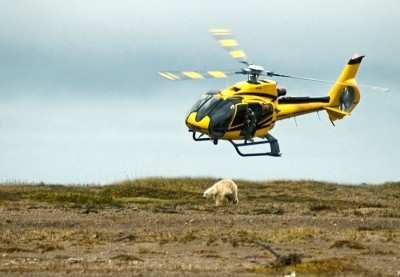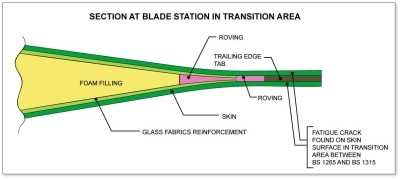Says Daily Rotor Check Procedures In Maintenance Manual Should
Be Revised
The NTSB Tuesday released identical recommendations concerning
some model Eurocotpers to the FAA and EASA. The board said
the two bodies should require Eurocopter to revise its aircraft
maintenance manual for all helicopters equipped with part number
355A11-0020 and/or 355A11-0030 main rotor blades to include, as
part of the daily flight-related check, specific visual inspections
of the trailing edge of the blades, upper and lower skin surfaces
for cracks and surface deterioration and/or disfiguration.
Eurocopter’s EC-130 aircraft maintenance manual (AMM)
specifies visual inspection of the main rotor blades as part of the
daily flight-related check for “security, general coating,
tabs, and polyurethane protection condition (visual check for
de-bonding, scratches, crack, impact and distortions). No erosion
holes on leading edge steel strip, no gaps nor impact.”

Eurocopter EC-130
Once the Eurocopter aircraft maintenance manual is revised, the
board recommends that operators of all Eurocopter helicopters
equipped with part number 355A11-0020 and/or 355A11-0030 main rotor
blades be notified that they should revise their maintenance
manuals to include specific daily visual inspections of the
trailing edge of the blades, upper and lower skin surfaces for
cracks and
surface deterioration and/or disfiguration.
On July 7, 2007, about 1651 EDT, a Eurocopter EC-130-B4
helicopter, N453AE, operated by Liberty Helicopters, Inc.,
experienced an in-flight separation of a section of one of the main
rotor blades during flight and sustained substantial damage during
an emergency descent and subsequent autorotation into the Hudson
River in New York. The commercial pilot and seven passengers were
uninjured. No flight plan was filed with the Federal Aviation
Administration (FAA) for the 14 Code of Federal Regulations Part
135 and 136 sightseeing flight, nor was one required. Visual
meteorological conditions prevailed at the time of the
accident.

NTSB Image
The NTSB determined that the probable cause of this accident was
the fatigue fracture and in-flight separation of a section of the
composite main rotor blade trailing edge aft of the spar, due to
inadequate manufacture, and the manufacturer’s failure to
detect an out-of-specification deviation in the rotor blade’s
trailing-edge roving.
The NTSB notes that the misalignment of the trailing-edge roving
fibers7 occurred during manufacturing, when the fibers likely
shifted during the curing process. Because the unidirectional
fibers of the roving were not properly aligned (were not parallel)
in the spanwise direction of the blade, a localized stiffness
change occurred at the trailing edge. The misalignment of the
fibers reduced the local load-carrying capacity of the roving, and
the loads were transferred to the skin, which started cracking.
According to a stress calculation conducted by Eurocopter, the skin
is more susceptible to cracks than the trailing-edge roving and
will start to fracture before the roving. The blades on the
accident helicopter had not previously had any cracking issues.
 ANN's Daily Aero-Term (05.09.24): Hold Procedure
ANN's Daily Aero-Term (05.09.24): Hold Procedure ANN's Daily Aero-Term (05.06.24): Altitude Readout
ANN's Daily Aero-Term (05.06.24): Altitude Readout ANN's Daily Aero-Linx (05.06.24)
ANN's Daily Aero-Linx (05.06.24) Airborne-NextGen 05.07.24: AI-Piloted F-16, AgEagle, 1st 2 WorldView Sats
Airborne-NextGen 05.07.24: AI-Piloted F-16, AgEagle, 1st 2 WorldView Sats Aero-News: Quote of the Day (05.07.24)
Aero-News: Quote of the Day (05.07.24)




